How does weather impact outdoor security cameras? Depends a lot on how the camera was manufactured, the weather conditions can play into the performance of home security systems, specifically the outdoor portions of that system. From scorching heat waves to torrential downpours and even freezing temperatures, extreme weather can pose challenges for these cameras.
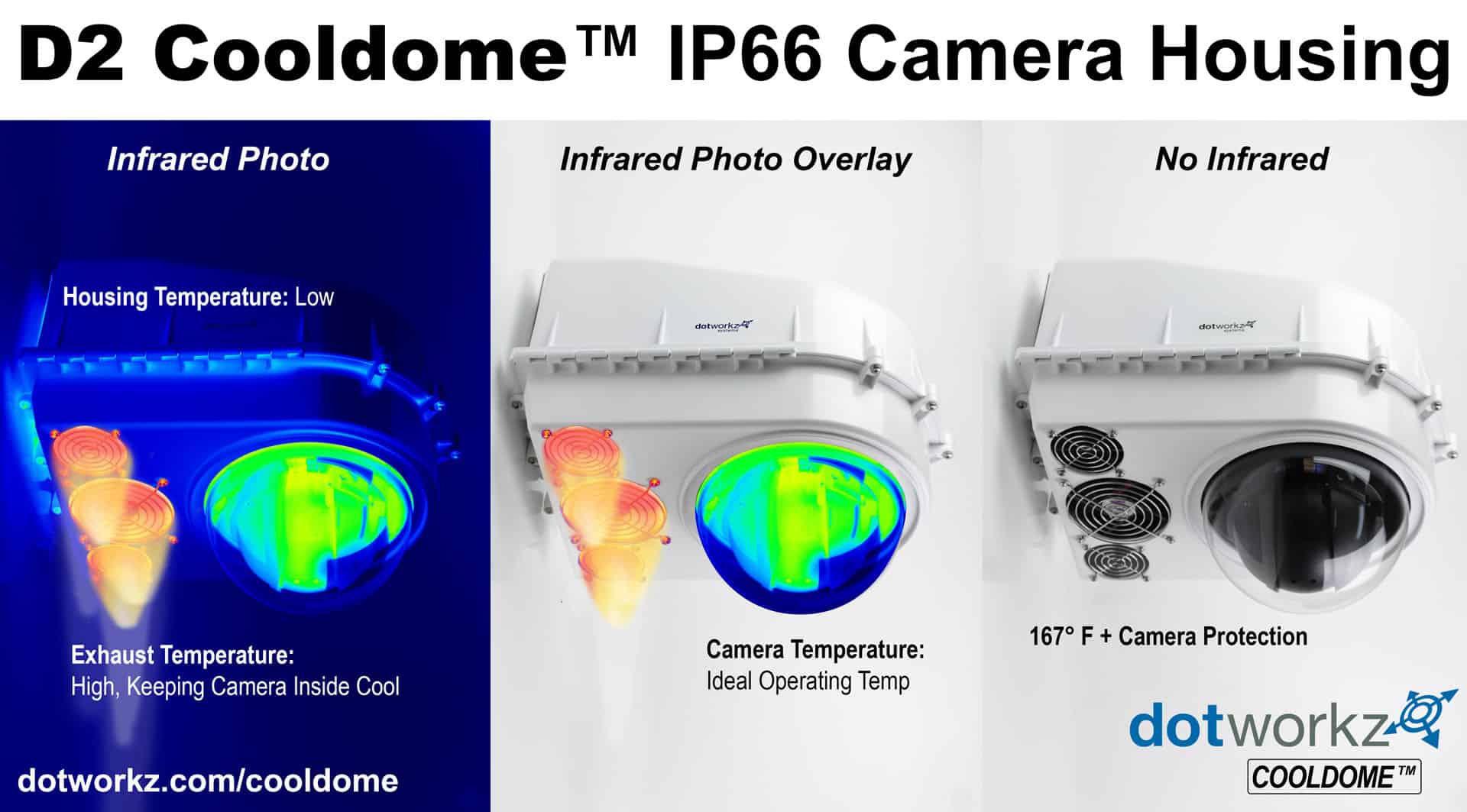
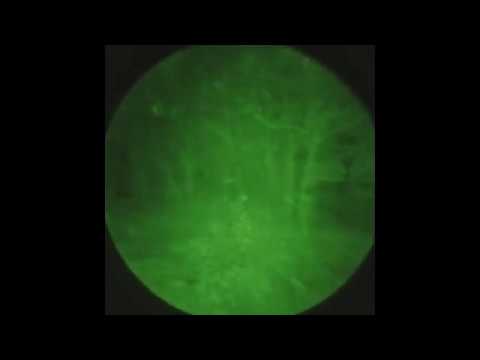 The above picture is viewed through a night vision camera where fog was present.
Foggy weather conditions can significantly impede the visibility range of outdoor security cameras. The dense fog can obscure the captured footage, making it difficult to identify individuals or objects even at a close distance.
The above picture is viewed through a night vision camera where fog was present.
Foggy weather conditions can significantly impede the visibility range of outdoor security cameras. The dense fog can obscure the captured footage, making it difficult to identify individuals or objects even at a close distance.
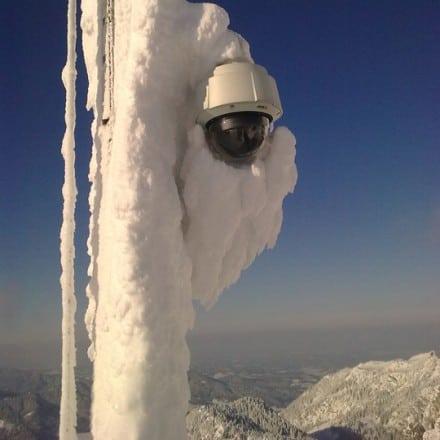 Extreme cold temperatures can affect camera performance by causing condensation, lens fogging, and reduced battery life. It is a good practice to choose cameras designed to withstand freezing temperatures and implement appropriate insulation measures if you live in a climate that could potentially reach brutally cold conditions.
Extreme cold temperatures can affect camera performance by causing condensation, lens fogging, and reduced battery life. It is a good practice to choose cameras designed to withstand freezing temperatures and implement appropriate insulation measures if you live in a climate that could potentially reach brutally cold conditions.
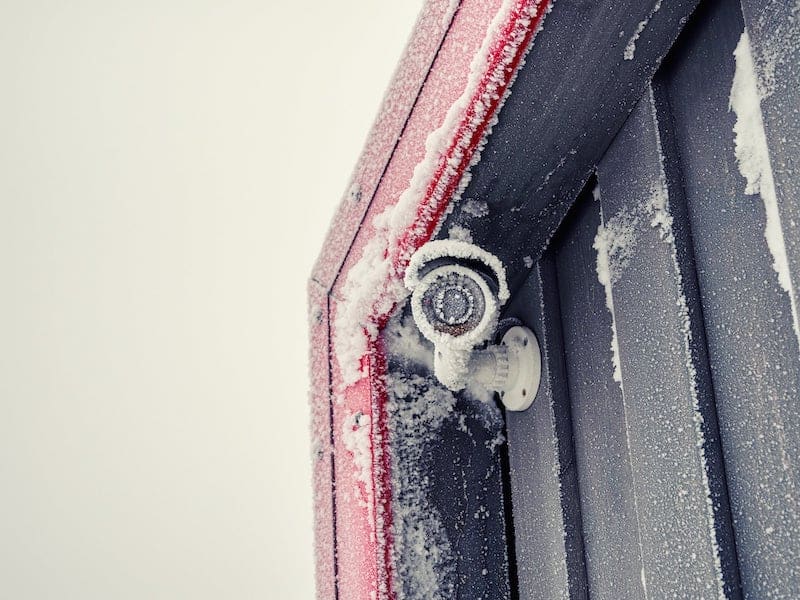
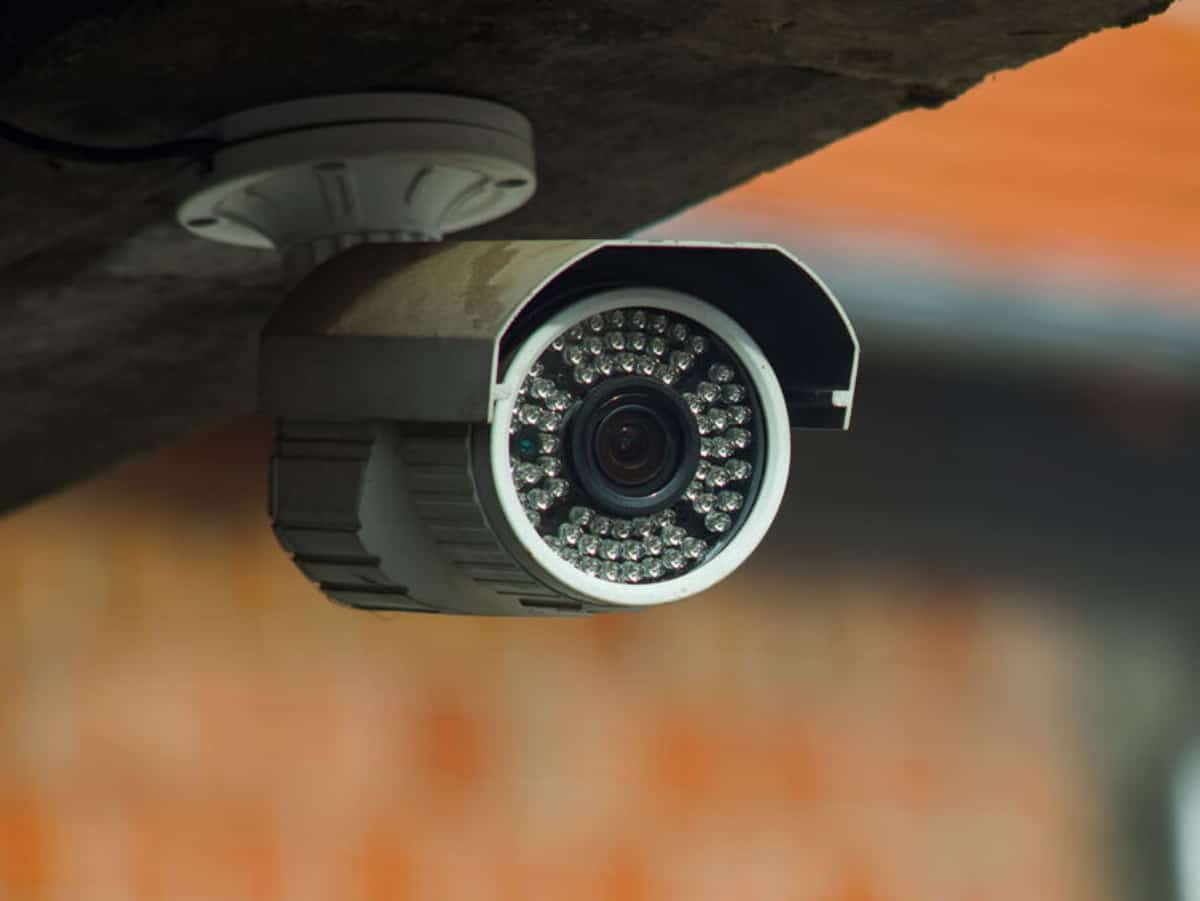
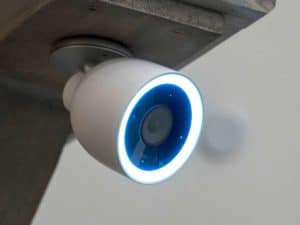

Weather Impact on Camera Performance
Weather conditions play a role in determining the overall performance of outdoor security cameras. From image quality to connectivity, various aspects can be affected by different weather factors. Let’s take a closer look at how weather impacts camera performance:Image Quality and Clarity
One of the critical aspects affected by weather conditions is the image quality and clarity of the footage captured by the security cameras. Factors such as rain, snow, fog, and high winds can obstruct the camera’s field of view and result in blurry or distorted images. Additionally, extreme heat or cold temperatures can cause condensation, leading to foggy lenses and degraded image quality.Visibility Range
The visibility range of outdoor security cameras is greatly influenced by weather conditions like rain, snow, and fog. These conditions can limit the camera’s ability to capture clear images and detect objects within a certain distance. It is important to consider weather-related visibility limitations when positioning and configuring outdoor security cameras.Night Vision
Outdoor security cameras equipped with night vision capabilities can be affected by weather conditions such as rain, fog, and even excessive artificial lighting. These factors can reduce the effectiveness of the camera’s infrared sensors, resulting in diminished night vision capabilities. Always test the cameras after installation to ensure everything look good, concerning your outdoor lighting. A lower lumen outdoor light or the repositioning of an outdoor landscape light fixture may be all that is requred to get adequate performance. It is also a good idea to choose cameras with night vision features that can withstand various weather conditions. Reference the YouTube video included here for a fairly in-depth look at settings, features, and strategies for getting the most out of your night vision equipped home security cameras.Lens and Sensor Maintenance
Weather conditions like rain, snow, and high humidity can pose maintenance challenges for outdoor security cameras. Accumulated moisture and debris on camera lenses and sensors can obstruct the view and impact image quality. Regular cleaning and maintenance are necessary to ensure optimal camera performance and longevity in harsh weather conditions.Motion Detection Accuracy
Outdoor security cameras rely on motion detection technology to identify and capture suspicious activities. However, weather factors such as rain, snow, and strong winds can trigger false alarms by constantly triggering the motion detection feature. This can reduce the accuracy and reliability of the camera’s alerts and notifications, leading to potential inefficiencies in security monitoring.Camera Housing Durability
The housing of outdoor security cameras plays a crucial role in protecting them from weather elements. Cameras with durable and weather-resistant housing are essential to withstand extreme temperatures, high winds, heavy rainfalls, and other environmental factors. It is important to choose cameras specifically designed for outdoor use and capable of withstanding different weather conditions. Check out the YouTube video in this section for an explanation of IP ratings, so you can tell what kind of conditions a security camera can endure at a glance.Power Supply Reliability
Weather conditions can also impact the reliability of outdoor security camera power supplies. Extreme temperatures can affect the performance of power cables and batteries, leading to potential power outages. It is important to choose cameras with a power supply systems designed to withstand various weather conditions and ensure uninterrupted camera operation. Also consider if using solar-powered cameras in an area will recieve adequate light to keep the batteries sufficently charged, as well as, if it is under an awning, eave, or similar roof structure.Connectivity Issues
In adverse weather conditions, outdoor security cameras may experience connectivity issues. Factors like rain, high winds, and electrical storms can interfere with wireless signals, leading to unstable or lost connections with the monitoring system. This can result in interrupted footage, delayed alerts, and compromised security monitoring. It is important to ensure a stable and reliable network connection for outdoor security cameras, especially in areas prone to frequent weather disruptions.Real-time Monitoring Challenges
Weather conditions can pose challenges to real-time monitoring of outdoor security cameras. For example, during heavy rainfall or thick fog, live monitoring may become difficult due to compromised visibility. This can hinder the ability to detect and respond promptly to security threats. It is important to consider weather-related limitations when designing a real-time monitoring system.Recording and Storage Considerations
Weather conditions can impact the storage and recording capabilities of outdoor security cameras. Factors like extreme temperatures and high humidity can affect the performance and lifespan of storage devices, leading to potential data loss or corrupt recordings. It is crucial to choose cameras with adequate (on camera) storage capacity and ensure proper backups to mitigate the risk of data loss due to weather-related issues.Weather Factors and their Effects
Now that we have explored how weather impacts camera performance, let’s dive into the specific weather factors and their effects:Weather Conditions
Rainfall
Heavy rainfall can obstruct the camera’s field of view and impact image quality. Raindrops on lenses can distort the captured footage, making it challenging to identify people or objects. Additionally, excessive rainfall can affect the durability of camera housing and expose internal components to water damage.Snowfall
Snow accumulation can cover camera lenses and obstruct visibility. The cold temperatures associated with snowfall can also affect camera performance, leading to issues such as condensation and reduced battery life.Fog
 The above picture is viewed through a night vision camera where fog was present.
Foggy weather conditions can significantly impede the visibility range of outdoor security cameras. The dense fog can obscure the captured footage, making it difficult to identify individuals or objects even at a close distance.
The above picture is viewed through a night vision camera where fog was present.
Foggy weather conditions can significantly impede the visibility range of outdoor security cameras. The dense fog can obscure the captured footage, making it difficult to identify individuals or objects even at a close distance.
Hailstorm
Hailstorms pose a significant threat to the durability of outdoor security cameras. The impact of hailstones can damage camera housing, lenses, and sensors, potentially rendering the camera non-functional.Thunderstorms
Thunderstorms often bring heavy rain, strong winds, and lightning, which can all impact outdoor security camera performance. Lightning strikes can cause power surges and damage the camera’s electrical components, necessitating repairs or replacement.High Winds
High winds can cause camera shaking, resulting in unstable footage and reduced image quality. Additionally, strong winds can also damage camera housings, mountings, and cables, leading to potential disruptions in camera operation.Temperature Variations
Freezing Temperatures
 Extreme cold temperatures can affect camera performance by causing condensation, lens fogging, and reduced battery life. It is a good practice to choose cameras designed to withstand freezing temperatures and implement appropriate insulation measures if you live in a climate that could potentially reach brutally cold conditions.
Extreme cold temperatures can affect camera performance by causing condensation, lens fogging, and reduced battery life. It is a good practice to choose cameras designed to withstand freezing temperatures and implement appropriate insulation measures if you live in a climate that could potentially reach brutally cold conditions.
Extreme Heat
High temperatures can affect the longevity of outdoor security cameras’ electronic components, including the lens, sensor, and camera housing. Overheating can lead to reduced image quality, increased noise in recorded footage, and potential damage to the camera’s internal circuitry.Humidity Levels
High Humidity
High humidity can cause condensation on camera lenses and sensors, leading to foggy images and reduced visibility. It can also contribute to the growth of mold and mildew inside camera housing, leading to long-term performance issues. Be sure to check IP ratings to make sure the home security cameras you are considering can handle the humidity.Low Humidity
Low humidity levels can increase the risk of static electricity buildup, which can potentially damage the camera’s electronic components. Although this COULD, in theroy, be a potential problem, we have never seen it develop in the real world as a problem.Precipitation
Rain
Heavy rain can not only impact the image quality and visibility range of outdoor security cameras but also affect their durability. The constant exposure to rainwater can cause corrosion, short circuits, and water ingress, leading to potential camera failure.Snow
Snowfall can cover camera lenses and obstruct the field of view. The cold temperatures and moisture associated with snowfall can also impact camera performance, leading to issues such as condensation and reduced battery life.Sleet
Sleet, a mixture of rain and snow, can pose similar challenges to outdoor security cameras as rain and snowfall. It can obstruct visibility and potentially cause water damage to camera components.Freezing Rain
Freezing rain can accumulate on camera lenses, making it difficult to capture clear images. The ice buildup can also create additional weight and strain on camera mountings or housings, potentially causing damage.
Wind Speed and Direction
Strong Winds
Strong winds can pose challenges to outdoor security cameras by causing camera shaking and instability. This can result in blurry images and reduce the overall effectiveness of the camera in capturing clear footage. Additionally, high winds can damage camera housing, mountings, and cables, leading to potential disruptions in camera operation.Dust Storms
Dust storms can significantly impact outdoor security camera performance by accumulating dust particles on camera lenses and sensors. This can lead to blurred images, decreased visibility, and potential damage to the camera’s electronic components.Sunlight Intensity
Glare and Reflection
Bright sunlight can create glare and reflection on camera lenses, obstructing the captured footage. This can make it challenging to identify individuals or objects, especially in outdoor areas with highly reflective surfaces.Overexposure
Intense sunlight can cause overexposure in camera footage, resulting in washed-out or distorted images. This can affect the overall image quality and make it difficult to discern important details.Fading and Sun Damage
Continuous exposure to direct sunlight can lead to color fading and sun damage to camera housings, lenses, and other external components. This can affect the durability and longevity of outdoor security cameras in sunny climates.
Seasonal Changes
Spring
In the spring season, outdoor security cameras may face challenges posed by rainfall, temperature fluctuations, and strong winds. Regular maintenance and appropriate camera positioning can help mitigate the effects of these weather conditions.Summer
During the summer months, outdoor security cameras may experience extreme heat, high humidity, and intense sunlight. Choosing cameras with built-in temperature regulation and investing in shade solutions can help protect cameras from the adverse effects of summer weather.Autumn
Autumn brings changing temperatures, increased rainfall, and falling leaves. Outdoor security cameras may need extra attention during this season to ensure proper functioning and image clarity.Winter
Winter poses unique challenges for outdoor security cameras, including freezing temperatures, heavy snowfall, and ice accumulation. Cameras specifically designed for cold weather conditions and regular maintenance are crucial to ensure reliable performance throughout the winter season.Climate Zone Variations
Tropical Climates
Tropical climates are characterized by high temperatures, humidity, and frequent rainfall. Outdoor security cameras in tropical regions may require special weatherproofing features to withstand these conditions effectively.Temperate Climates
Temperate climates offer relatively mild weather conditions with moderate temperatures and rainfall. However, outdoor security cameras in these regions may still face challenges posed by seasonal variations in weather, such as temperature fluctuations and precipitation.Arctic Climates
Arctic climates present extreme cold temperatures, gusty winds, and heavy snowfall. Outdoor security cameras designed for arctic conditions must have robust insulation, heating elements, and weatherproofing to withstand these harsh weather conditions.Arid Climates
Arid climates are characterized by low humidity, intense sunlight, and temperature extremes. Outdoor security cameras in arid regions may need to be protected from sun damage and adequately cooled to prevent overheating.Equatorial Climates
Equatorial climates experience high temperatures, humidity, and heavy rainfall throughout the year. Outdoor security cameras in equatorial regions need to be resistant to moisture, temperature variations, and strong winds to ensure reliable performance in these challenging weather conditions. In conclusion, weather conditions and climate zone variations significantly impact the performance and reliability of outdoor security cameras. From rain and snow to extreme heat and strong winds, each weather factor poses its own challenges and effects on camera operations. By understanding these factors and selecting cameras specifically designed to withstand various weather conditions, you can ensure optimal security monitoring and protection of your outdoor spaces.